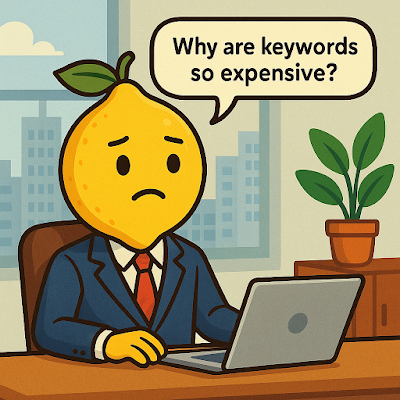This might already be happening at some level.
History: When e-commerce took over from catalog marketing, new "channels" emerged. Over the course of fifteen years, money that would have been spent in the list industry and/or catalog co-ops evaporated, migrating over to search and social and display and affiliates and then to Amazon ... etc. Now, money went in those areas because that's where humans went. A combination of eyeballs moving elsewhere coupled with catalog co-ops automating human tasks resulted in the death of the catalog list industry (around 2005-2007ish). The continued migration of eyeballs to a search/mobile/social world caused the eventual (and predictable) collapse of the catalog co-op industry.
See how that all played out? Fewer eyeballs caused reduced performance. Any dollars left in the catalog ecosystem went to the co-ops (automated) instead of the list industry (humans), then the dollars left the co-op ecosystem as too few valuable eyeballs were captured by the co-ops.
Future: A person told me today that they perform most of their searches on ChatGPT. "It's just easier, I'm leaving Google". Here in the United States, what happens when thirty million people use Google less and AI more? You're probably saying "what do I care?" You should care. When those eyeballs leave Google, those eyeballs aren't on Google looking at your Product Listing Ad, are they? This should create a fun dynamic, because there will be less eyeballs to buy your products, which means that the Lemonheads will PAY MORE for the clicks that remain, rendering search marketing less profitable. Search will collapse in the manner that the catalog list industry collapsed. It won't die ... the catalog co-op community was a logical evolution of the list community. But it will become a less viable avenue for you to find new customers. It's relevance will collapse. And you'll be desperate for new customers if you are a Lemonhead.
I know, you're thinking that Google will solve their problem with AI. They might. They might also experience the rusty irrelevance that all incumbents experience when trying to bolt their solution onto a legacy solution. Ask Macy's how omnichannel strategy worked out for them.
This is why I'm going to spend considerable time talking about new customers, talking about scoring new customers. We need a process, a framework, to understand how coming changes are going to impact the businesses we manage. Everything that is coming in the next five years needs to be understood. You are not some stupid Lemonhead who "Embraces AI" or offers thought leadership on the fusion of "Search, Commerce, and AI". You are a practitioner who understands business. That's what I'm going to help you do. I'm going to help you understand how the new customers you bring into your business impact your future.
P.S.: From a ChatGPT question ... "who uses the term Lemonhead"?






